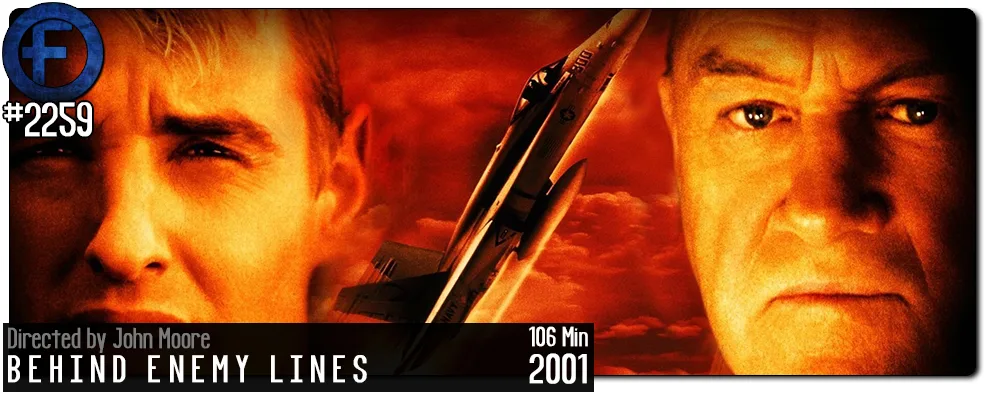Movie Review – Behind Enemy Lines
Principal Cast : Owen Wilson, Gene Hackman, Gabriel Macht, Charles Malik Whitfield, David Keith, Olek Krupa, Joaquim del Almeida, Vladimir Mashkov, Mark Igonda, Eyal Podell, Laurence Mason, Leon Russom, Geoff Pierson, Vladimir Oktasec, Kyle Chandler.
Synopsis: A disillusioned pilot shot down over war-torn Bosnia goes on the run from the local military and an assassin, as his commanding officer risks all to save him.
********
In the late 90’s and early 00’s, the action film genre was encountering a bit of a bananas lurch to the left. Success in turning esoteric Best Actor Oscar winner Nic Cage into an action hero had been met with smashing success, and so it came to be that Hollywood decided that if Cage could make it as a musclebound hulk laying waste to bad guys and making box-office bank, then so too could rising star Owen Wilson. Yep, that Owen Wilson. Although a supporting role in Michael Bay’s 1998 action cheesefest Armageddon blasted him (literally and figuratively) into the limelight, Wilson’s natural charisma was seen by some to be ready-made to make the transition from stammering aww-shucks surfer-boy good naturedness into the hurly burly of explosions and adrenaline – perhaps without realising it, filmmaker John Moore instead managed to curtail Wilson’s burgeoning career with this decade-defining clusterf*ck of absurdity: the 2001 film Behind Enemy Lines. As a venture into the heart of war-torn Bosnia, this film, despite its bonkers and silly undertones, manages to captivate and entertain, leaving audiences with a heady concoction of disbelief and sheer enjoyment.
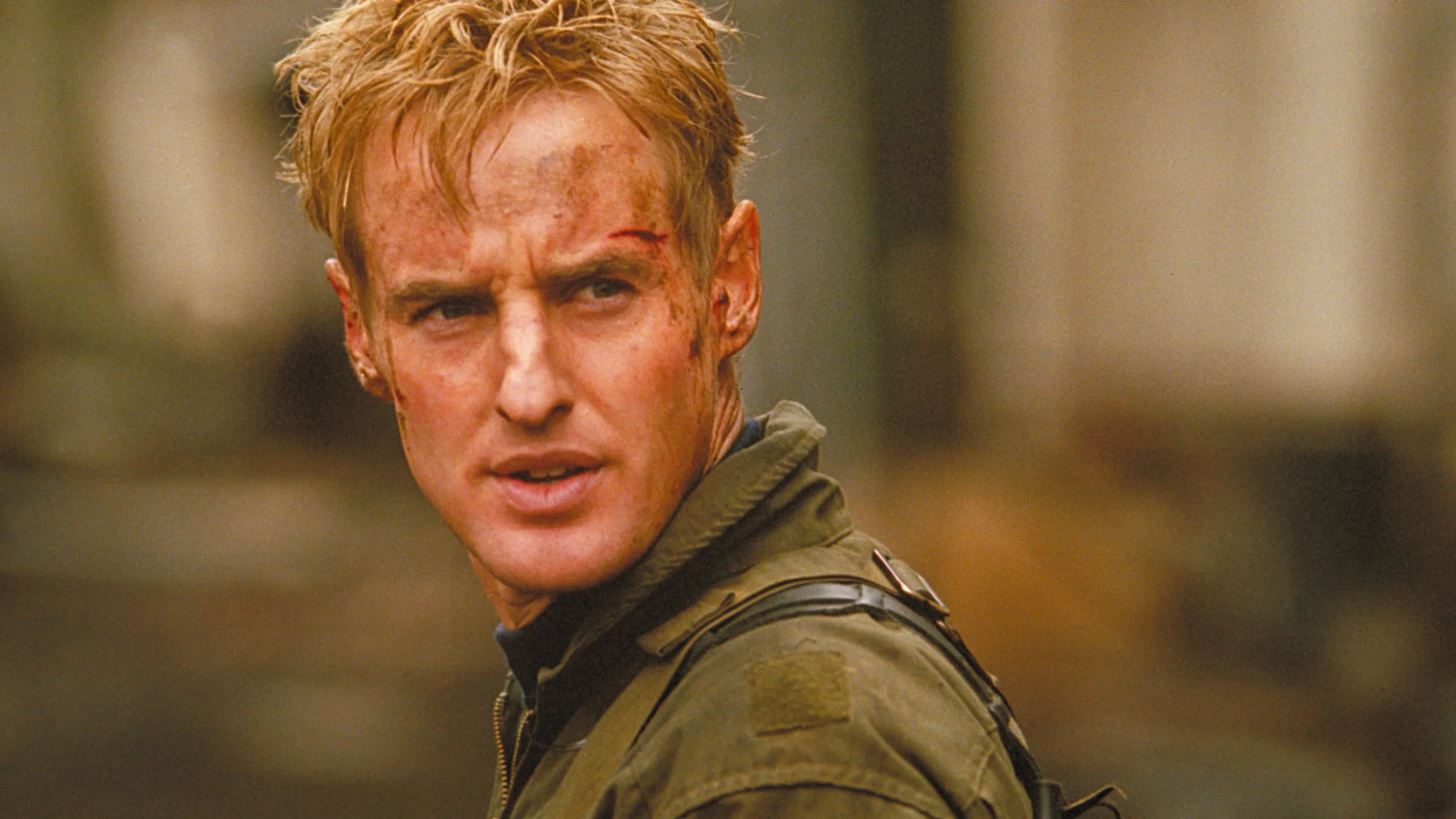
In the heart of war-torn Bosnia, Behind Enemy Lines unfolds as Naval Flight Officer Lieutenant Chris Burnett (Wilson) embarks on a routine reconnaissance mission that takes a perilous turn. Shot down over enemy territory, Burnett, along with his pilot Stackhouse (Gabriel Macht), becomes the lone survivor, thrust into a relentless pursuit behind enemy lines. As Burnett navigates the treacherous terrain, he becomes the focus of the determined adversary Sasha, portrayed with sinister zeal by Vladimir Mashkov. Amidst the chaos, Burnett’s journey transforms from reluctant heroism to a relentless quest for survival, unfolding against the picturesque yet brutal backdrop of war-ravaged Bosnia. As the stakes of Burnett’s survival escalate, his path intersects with that of Admiral Reigart, played by the venerable Gene Hackman. As the commanding officer, Hackman brings gravitas to the narrative, providing guidance and support to Burnett from the safety of the aircraft carrier. Oleg Krupa takes on the role of the relentless antagonist, Colonel Miroslav Lokar, further intensifying the pursuit.
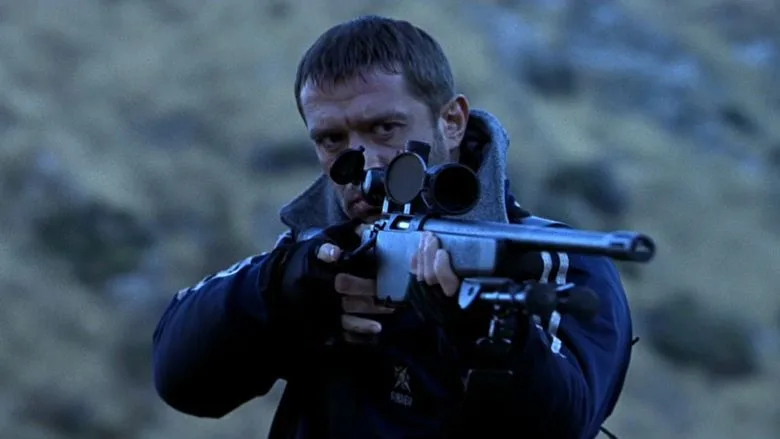
Director John Moore leverages the picturesque landscapes of war-torn Bosnia to create a visual spectacle that, despite the film’s bonkers premise, adds a layer of authenticity. The contrast between the serene beauty of the landscape and the brutality of war becomes a poignant backdrop to Burnett’s journey. The aerial sequences, in particular, showcase Moore’s directorial prowess. The dogfights and high-stakes chases through the vast expanse of the Bosnian wilderness are choreographed with a visceral intensity that elevates the film beyond its inherently silly premise. The visual spectacle becomes an integral part of the film’s appeal, inviting audiences to buckle up for a visually arresting joyride. And yet, Behind Enemy Lines does not shy away from embracing the absurd. From a lone navigator outsmarting an entire enemy army to surviving seemingly impossible situations, the film revels in its over-the-top narrative choices. The pursuit of Burnett by the relentless antagonist, played with sinister zeal by Vladimir Mashkov, becomes a cat-and-mouse game that defies the laws of probability. And it is precisely these bonkers plot elements that contribute to the film’s charm. The sheer audacity of the narrative choices, while undeniably silly, transforms Behind Enemy Lines into a guilty pleasure for audiences craving unadulterated escapism. The film becomes a testament to the notion that sometimes, in the realm of cinema, embracing the absurd can lead to unexpected delight.
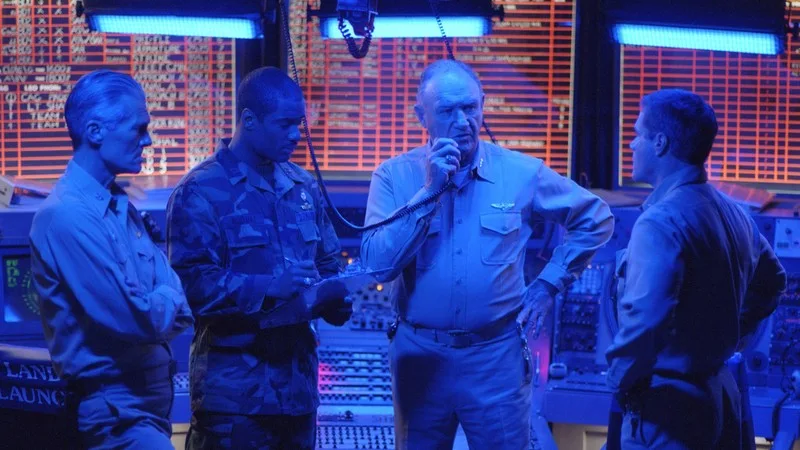
Beneath the surface of the high-flying antics and explosive set pieces, Behind Enemy Lines attempts to weave a thin veil of geopolitical reality. The film touches on the political complexities of war and the challenges faced by those caught in the crossfire. However, these themes remain secondary to the film’s primary focus on Burnett’s survival, creating a narrative that, while entertaining, lacks the depth to fully explore the nuanced realities of conflict. As we navigate the war-torn landscapes of Bosnia alongside Lieutenant Burnett, it becomes apparent that Behind Enemy Lines is a film that revels in spectacle rather than substance. The emphasis on high-octane action and visual extravagance occasionally leaves the narrative devoid of emotional depth or profound commentary on the human cost of war. While the film successfully delivers on its promise of adrenaline-fueled thrills, it falls short in offering a more nuanced exploration of the psychological toll of being behind enemy lines. The juxtaposition of the film’s bombastic action against the grim realities of war creates a dichotomy that, at times, feels disjointed.
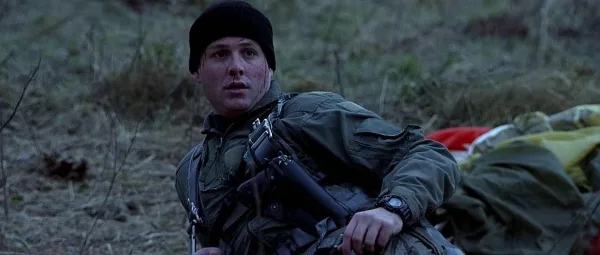
Amidst the inherent silliness, Behind Enemy Lines boasts technical brilliance that elevates it above the realm of run-of-the-mill action flicks. The cinematography captures the chaos of war with sweeping aerial shots and intense close-ups, immersing the audience in the heart of the conflict. The sound design, coupled with a pulse-pounding musical score by Don Davis, amplifies the tension and excitement. The symphony of explosions, aerial acrobatics, and gunfire becomes a sensory feast that caters to the primal desire for cinematic escapism. Moore’s directorial choices, particularly in the pacing of action sequences, contribute to the film’s undeniable entertainment value.
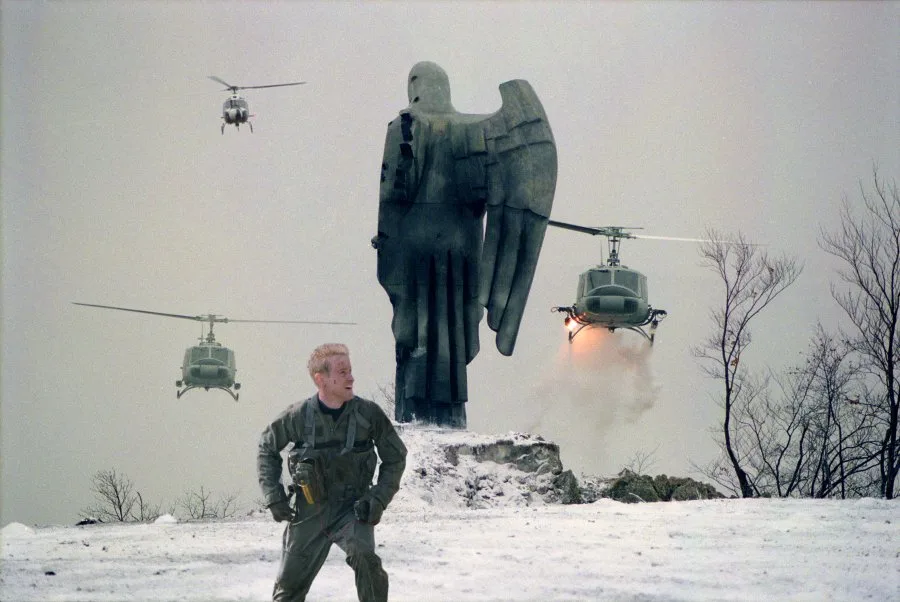
Behind Enemy Lines is a cinematic rollercoaster that, despite its bonkers and silly elements, manages to soar on the wings of pure escapism. Owen Wilson’s unexpected foray into the action genre, coupled with John Moore’s directorial finesse, creates a film that embraces its absurdities with unabashed glee. The visual spectacle, high-flying stunts, and Wilson’s charismatic performance collectively transform the film into a guilty pleasure for audiences seeking a break from the complexities of reality. Wilson may never have fully embraced the mantle of a mainstream Hollywood action hero – the film feels schizophrenic in this regard – nor have audiences ever proclaimed a desire to see him continue with this kind of material, but as an outlier in the actor’s filmography it’s hardly a career-ender. While the narrative may lack the depth to explore the intricacies of war, Behind Enemy Lines succeeds in delivering a visceral experience that caters to the primal desire for excitement. The film, with its audacious plot choices and technical brilliance, is pure cinematic escapism.

